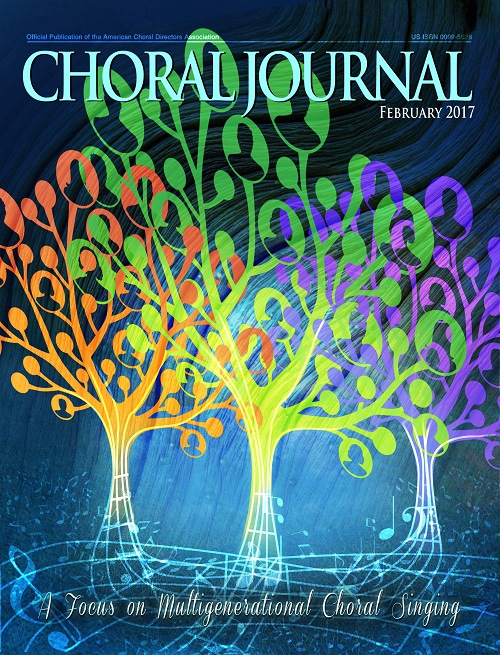The February issue of Choral Journal features a special series of articles on the topic of multigenerational choral singing. You can read a preview of all the articles available in that issue in this post. Following is a section from the article by John C. Hughes and Jon Hurty, “A Life of Song: Considerations for the Collegiate-Based Town and Gown Choir.”
__________________
Perhaps more than any other type of choral ensemble, collegiate-based multigenerational choirs embody “a life of song.” Many colleges and universities offer a “town and gown” choir—an ensemble open to students, faculty, staff, and singers from the surrounding community. For the purposes of this article, the term town and gown choir will describe a multigenerational choir that functions primarily in a college or university setting and includes both students and community members. Undergraduate students away from home for the first time stand next to community members who have sung in the choir for decades.
There are benefits for everyone who participates in this kind of ensemble. Musically, community members’ years of experience are advantageous, and younger voices balance more mature sounds. Furthermore, students recognize that regardless of major or profession, one can and should make singing a lifetime activity, and community members are energized by their interaction with young adults. This article explores the musical, social, and vocational benefits of these choirs and discusses the opportunities and challenges that are specific to town and gown choirs. The authors (who conduct multigenerational choirs at their respective institutions) offer suggestions for leading these unique ensembles.
Every choir, whether high school, church, university or professional, comes with its own potential for success and inherent challenges. Multigenerational town and gown choirs are no exception. Two of the primary challenges are the wide range of individual skill levels of singers and limited rehearsal time—both of which can engender performances that are not of the highest quality. However, these challenges can also provide special opportunities for conductors and ensembles. Conductors have the opportunity once or twice each week to unite people of different generations and talent levels into something larger than themselves. By creating what Weston Noble refers to as “the special world,” when “everything is in line—we are momentarily whole,” conductors can guide choir members beyond social and generational divisions and toward oneness with each other. The unique setting of these choirs provides particular opportunities.
Repertoire selection and using the skills, knowledge, and talents of the surrounding academic community can help everyone be more engaged in the artistic process. Examples include asking a German major to read a German text aloud or provide a translation for the group or inviting an English professor to lead a discussion of the text. One could even develop a course that addresses the context, history, and related material of a major work that the choir is preparing. At Augustana College, we have an interdisciplinary general education requirement called “Learning Communities.”
In conjunction with a performance of Britten’s War Requiem, I (Jon Hurty) collaborated with English and Religion faculty to offer a Learning Community course exploring the musical, social, religious, textual, and historical context of the piece. In addition to the normal coursework, students did research on various aspects of the work, then shared their information with the larger ensemble through email and short presentations. Involving the singers and sparking discussion about the music and text not only bridges the generation gap but also unifies them as an ensemble. Town and gown choirs can be more than a class to students or another weekly obligation for community members. Rather, they can be an event that members look forward to in their own way—a break from exams and papers, a night out for parents of young children, or a social activity for retirees. Interesting repertoire presented in an engaging and collaborative manner is perhaps the fastest way to create a feeling of community.
___________________
ACDA members can log in with their username and password to view and download the February 2017 issue and read the rest of this article and the others in this issue. You can also read our electronic version. If you are not already a member of ACDA, join today to start receiving your monthly Choral Journal! Associate members can join for only $45 a year.



Leave a Reply
You must be logged in to post a comment.